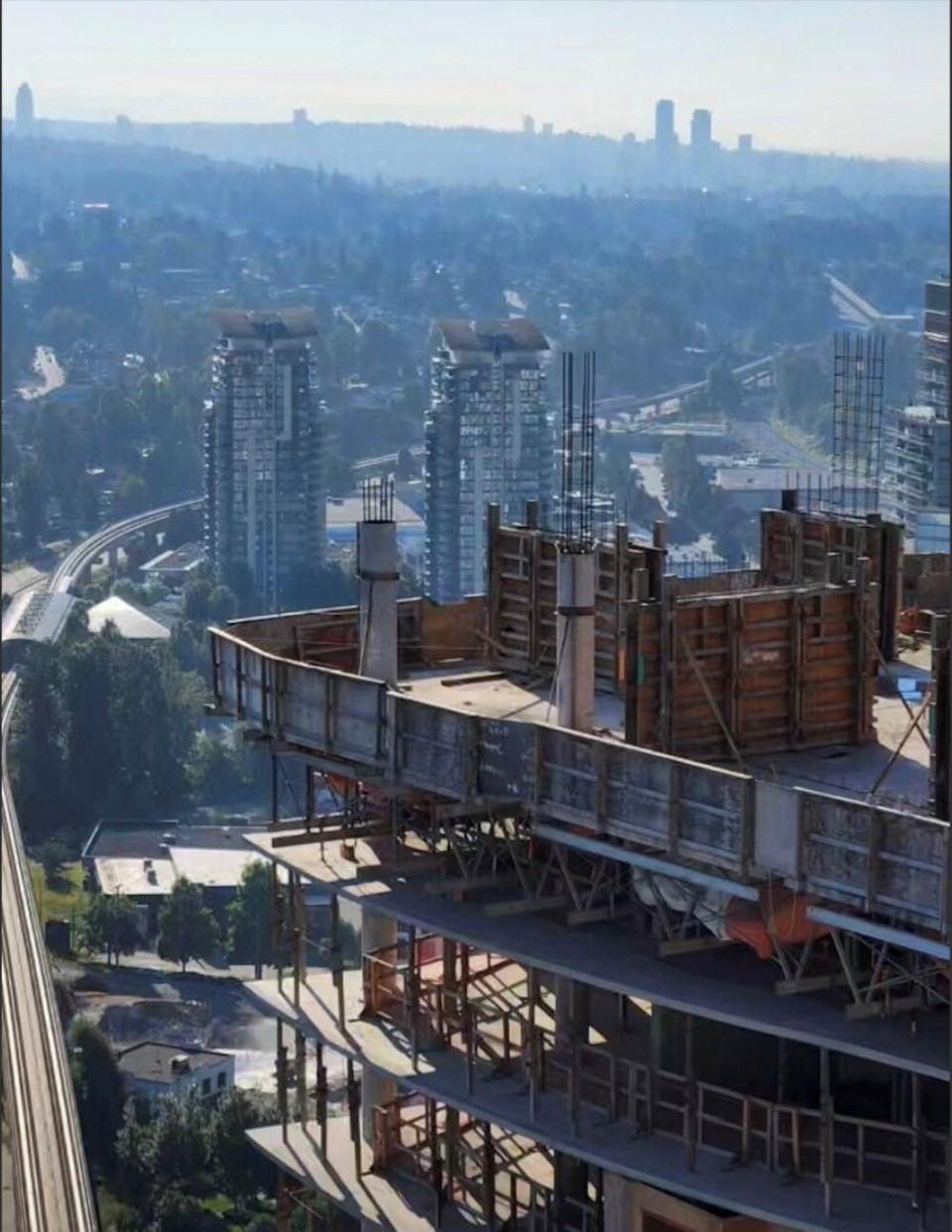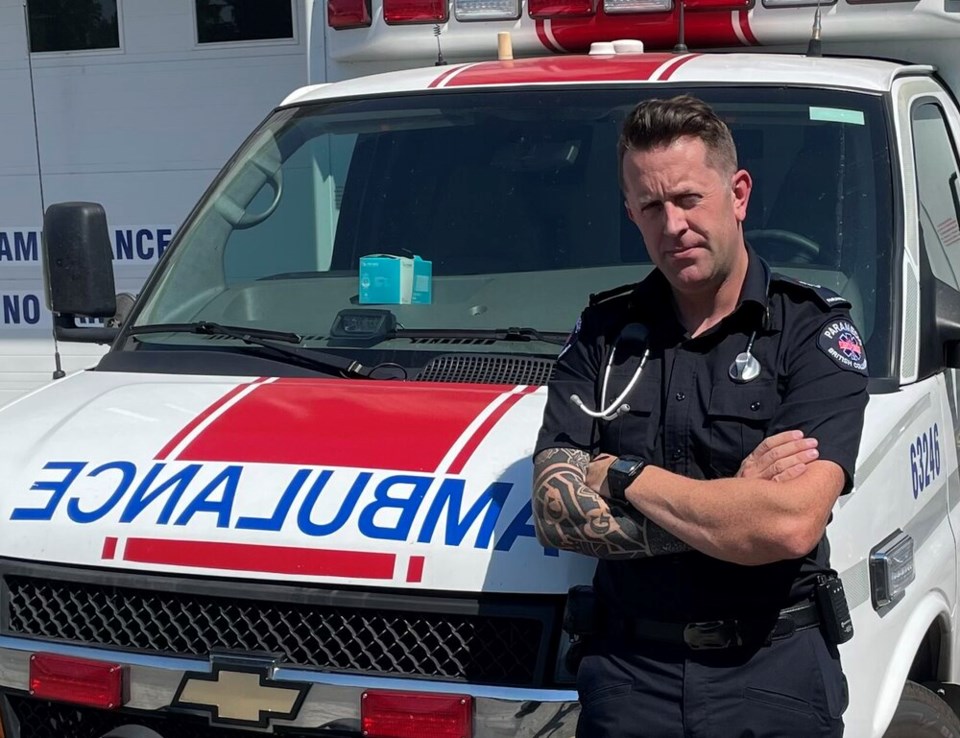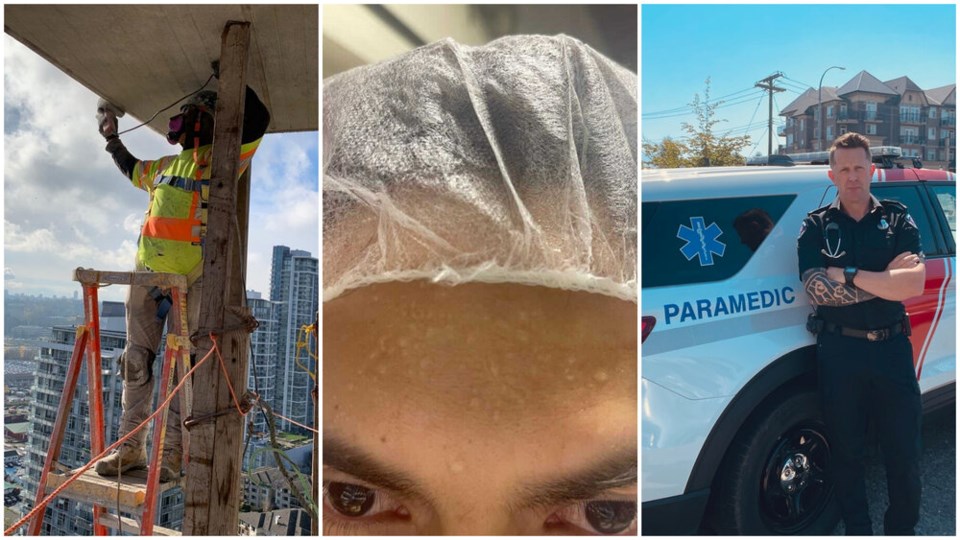The 2021 heat dome killed 619 British Columbians while the November floods that followed caused at least $9 billion in damages.
For Sara Kendall, her thoughts went out to some of the most vulnerable people during that time — migrant workers.
“They were left on roofs in the floods, without food and in the cold,” says the ambulance paramedic.
Trained as a doctor in Cuba, Kendall speaks Spanish and has a background in community and emergency health.
So when she was asked to help train foreign temporary workers in how to respond to a medical emergency, she jumped at the opportunity.
So far, Kendall says she’s helped train over 200 migrant workers, who come on their only day off from the farms surrounding communities like Abbotsford, Langley and Kelowna.
In an intensive session, the workers learn how to read vital signs, how to do CPR in a drowning situation, or how to treat hyperthermia during a heat wave.
Whether because of language barriers, isolation in a rural area or poor working and living conditions, migrant workers have a particular set of vulnerabilities.
But under a heat wave, their situation is not unique.
During last year’s record hot week, accepted worker claims due to heat illness spiked across the province by 180 per cent over the previous four-year average.
More than a year later, the heat has returned, on Friday triggering heat warnings in 33 regions across B.C. — and begging the question, how are workers coping?
As the temperatures soar in factories, kitchens, and worksites, Glacier Media checked in with three workers over the course of 24 hours.
The baker
Alberto has one job — knead the bread.
When he steps inside the North Vancouver bakery at 7 a.m. to start work, four ovens are running at full blast.
While it’s hot outside, inside, it’s worse: a thermometer near the bread proofer says the room has already warmed to 38 degrees Celsius.
Alberto drinks his first bottle of water. But for every sip or bathroom break, he has to ask permission so someone can take his place on the production line.
“It’s constant production,” he says. “What I really want is to drink water, because I feel dehydrated.”
It’s a far cry from his uncle’s bakery in Northern Mexico, where he used to help out when he was younger. But his bosses are sponsoring his Canadian visa, so the young man stays.
When the 2021 heat wave hit, Alberto and the other bakers had only two fans. The entire facility felt like it turned into an oven, says Alberto.
A year later, the owners of the bakery bought a few more fans, but Alberto says they aren’t enough to remove the heat.
At work, he says the high temperatures bring out the worst in people. It makes them agitated, quick to anger.
Some can’t take it.
One younger baker called in with a headache earlier this week.
Another older colleague remembers the 2021 heat wave. To try to get relief, they placed two fans a couple of metres from their backs. That's when the older worker felt pains shoot through his back. His body, made sensitive from the heat, couldn’t take the shock.
Alberto says the man hasn’t been at work for two days this week.
Part of him wants his bosses to make the same call as other bakeries around the city — to shut down. But part of him knows taking a day off isn’t an option.
“We need to work. We need to get our hours and make money,” he says.
By 10 a.m., the temperature inside has climbed to 42 C.
All the workers have removed their white jackets. Alberto has sweated through three T-shirts. He has drunk over seven litres of water.
The ovens will soon be turned down. It’s time for the bread to get shipped out to the big-box grocery stores and neighbourhood shops.
Soon it will be time to clean up, to go home.
Old scraps of fermenting dough in the sink waft an awful, rotten smell into Alberto’s face.
“Tomorrow could be even worse,” he says.
The construction worker
It’s 7 a.m., and Braulio Muñoz Sanchez is perched on a ladder 50 floors off the ground.
Towering amid a clutch of Burnaby high-rise apartments, his phone tells him it’s 26 degrees Celsius outside. But as the sun arcs up and across the sky, the temperature will climb.
“All day, I’m exposed to the sun,” says Muñoz Sanchez.
A construction worker, the 31-year-old father of two, used to run a small advertising shop in the central Mexican town of Atlixco. But after he got into some debt, his family told him to get out.
Now, instead of designing T-shirts and hats, Muñoz Sanchez works on a two-year temporary visa, in charge of grinding the outside of dozens of balconies that make up the facade of a growing urban metropolis.
After four years, he is an experienced worker. But this week, spending all day in the heat has left his hand blistered, even through the gloves.
“It was one of the hardest days yet,” he says. “It was really heavy.”
Above him, the heat forced the roofers to stop at 10 a.m.
“They’re young people, but it was hitting hard,” he says.
When the sun hits Muñoz Sanchez, he drinks a lot of Gatorade and moves to another side of the building.
His phone tells him it's 33 C but it feels hotter.
Muñoz Sanchez gets the call: it's 3 p.m. and it's time to go home. Even the shade of a multi-storey high-rise apartment isn't enough.
“If we get dizzy and fall, we can hurt ourselves,” he says.

The paramedic
An advanced care paramedic with BC Ambulance Service, Ian Tait is used to heading into stressful situations.
Still, last year was something different.
“I was driving to Hope with no backup where people are in cardiac arrest the entire time. They couldn’t get through to 911,” he says.
“We witnessed the collapse of the British Columbia emergency health services.”
Tait says a lot of the other paramedics he works with were forced to take months off work to cope with the stress of that night.
A year later, the heat is back, and while not as intense, still deadly.
At 8:30 a.m. Thursday morning, Tait fires up the air conditioning in the white SUV. The vehicle is kitted out as a paramedic responder unit. Working alone, Tait will respond to the most serious calls around the City of Chilliwack where he’s based.
Unlike last year, Tait says his bosses are somewhat more prepared this time around — they gave him what looks like a fishing hat and a Yeti cooler mug as part of a big push to keep everyone cool and hydrated at work.
And unlike the heavy uniforms paramedics used to receive, this year, Tait is wearing a fluorescent yellow, sweat-wicking shirt.
But COVID-19 precautions are still a thing, and when he responds to nine calls over the next 14 hours, there’s a good chance many of them will involve a lot of personal protection equipment.
“We still will wear the garbage bag on top of us when we do a cardiac arrest,” he says. “Man, if you want to sweat through every article of clothing you have, you put a garbage bag over top of it.”
When he checks in with the hospital manager, a friend of his, she says “it’s packed” and “don’t bring anybody here.”

Next, a code three to Hope, another in Agassiz.
The temperature climbs past 30 C.
Tait says he’s waiting until people get out of the sun and head home for dinner. That’s when heat illness really kicks in.
“They'll get home and then maybe their environment can't get cooled, they don't have an air conditioner,” he says.
Night comes and goes, along with Tait's 14-and-a-half-hour shift.
At 9 a.m. Friday, he's back on duty.
That’s when the heat illness calls come in.
Tait pulls up to an apartment building in Chilliwack. Outside, he loads up with gear. Inside, he finds an older man stuck for several days in an unventilated apartment.
“I’m sweating before I get in the place. And then you walk in, you're like, ‘Holy cow, it's frickin' so hot here,” says Tait. “The guy's covered in sweat. He's like delirious. He’s really suffering.”
“And then you think to yourself, ‘Man, these poor seniors have been basically [cooking] in here for like a week now’… It’s not consistent with life to be living in that.”
With the patient’s health deteriorating, Tait rushes him to the hospital.
Then another heat call: a younger man who had been camping, drinking and spending too much time in the sun.
Somewhere along the way, Tait reminds himself he needs to drink more water, he needs to take electrolytes.
“We're definitely nervous about this weekend,” he says.



.jpg;w=120;h=80;mode=crop)

